- Administrator
- Albums and Singles
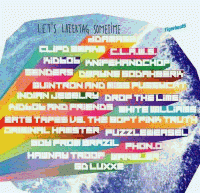 The title of this new Tigerbeat 6 sampler doubles as a good pick-up line to use at the next DragonCon. It features 20 tracks drawn from the current stable of TB6 talent; familiar faces like Kid606 and Knifehandchop rubbing shoulders with up-and-comers such as Drop the Lime, Phon.O and Eats Tapes. I'm happy to report that the TB6 bratty punk-tronica aesthetic is in full, frenetic effect.
The title of this new Tigerbeat 6 sampler doubles as a good pick-up line to use at the next DragonCon. It features 20 tracks drawn from the current stable of TB6 talent; familiar faces like Kid606 and Knifehandchop rubbing shoulders with up-and-comers such as Drop the Lime, Phon.O and Eats Tapes. I'm happy to report that the TB6 bratty punk-tronica aesthetic is in full, frenetic effect.
Quintron and Miss Pussycat bounce back from the double bitch-slap of Katrina and Rita with "Swamp Buggy Badass," all snarling rockabilly swagger and deep-fried Southern decadence filtered through sleazy techno throb. Play this track side-to-side with Alan Vega's "Jukebox Baby" and tell me which one you like better. It might be too close to call. Suddenly and unceremoniously, the mix travels from the bayou to the teeming metropolis of Berlin, soundtracked by Phon.O's throwaway bit of bottom-heavy crunk-tech "Dumpsta Railin'," fun but unsubstantive. Of course, if you came here looking for substance, you were barking up the wrong tree in any case. The same goes for Kid606's "Let It Rock" from last year's Pretty Girls Make Raves, a study in glittering superficialities, a kaleidescope of club-friendly big-ups and shoutouts rolled into one big, hyperactive beat-propelled mess. G.D. Luxxe injects some robot funk into the mix with "Gift," a hard-edged technopop tune that rocks, like, pretty hard.
A few acts on this comp attempt to problematize the usual association of TB6 with bedroom electronica and trashy techno, bands like Clipd Beaks, Genders and Boy From Brazil who bring the rock, complete with real instruments and everything. Clipd Beaks seem really promising with "Nuclear Arab," an acid-damaged wall of urgent noise-rock that locates audible signifiers of protest and political resistance in the same ballpark as This Heat and early Section 25. I saw Genders open for Adult. last year, and was underwhelmed, but their track here ("Apes") is actually pretty neato, atmospheric psych-pop hidden behind layers of murky reverb and obscured by willfully perverse mixing strategies. Boy From Brazil's "Pocket Rocket Queen" steals a page from Quintron's book, a snotty, sexually confrontational electro-rock paean to the vibrator, delivered with a heavy dose of rockabilly attitude, as well as the liberal use of that late-50s Gene Vincent vocal echo. Kid606's other contribution to the comp, credited to "Kid606 and Friends," is a full-on rock song as well, with what sounds like live drums and guitars. "We Need to Make a Change" is both a political rallying cry and a party anthem, with an infectious bassline and a singalong chorus. Who are these "friends" exactly?
As is expected, this sampler also contains a full complement of instantly disposable chunks of ironic nonsense. I'm thinking here of Hawnay Troof's "Man On My Back," which is an angry call-and-response rap delivered a cappella over weird chugging sounds, followed by 25 seconds of silence (a mastering error?). It's pointless, but maybe that's the point. "Claws Theme (Edit)" by C.L.A.W.S. is dumb and damned proud of it, and that's got to count for something. Original Hamster manages to combine the agitating repetition of Reggaeton with early-90s diva-house, tying it all together with chopped up vocal samples and squishy acid squiggles, and it somehow works. Knifehandchop chimes in with an exaggerated wet dream of deconstructed, chopped and screwed robotripped hiphop that reimagines the scene in extrapolated dystopian form. It's crunk as hell, but also fucking terrifying.
Eats Tapes samples the "Uh -huh" from Soft Pink Truth's dionysian cover of Nervous Gender's "Confession" (also known as "Jesus was a cocksucking Jew from Galilee") to create a bouyant party jam that gradually snowballs into an dizzying cut-up techno piece that made me queasy with its frenetic invention. Indian Jewelry's "Emptyhanded" persists on the noisier end of mannered garage rock, and for no reason that is immediately apparent to me, is one of my favorite tracks on the comp. Drop the Lime's "Butterscotch" sounds like a less repellant version of Gold Chains: fat synth lines, bassy throbs and testosterone-amped vocal refrains. It's far too short, but it's lovely while it's there. Filler tracks by dDamage, Warbler and Puzzleweasel hardly warrant mention; it just wouldn't be a Tigerbeat sampler without a few head-scratching moments of sarcastically shitty, spastic, post-IDM Nintendo-esque trash.
Rest assured that Tigerbeat 6 is keeping it real: real electic, weird and fun.
samples:
- Quintron and Miss Pussycat - Swamp Buggy Badass
- Eats Tapes vs. Soft Pink Truth - Uh Huh
- The Genders - Apes
Read More
- Administrator
- Albums and Singles
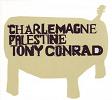 Normally live albums fail to capture the magic of being at the show, instead they end up as souvenirs for those who were there or extra materials for completists to collect like archaeological specimens. However, this CD documenting a meeting of two legends of minimalism is a beautiful recording that seems to capture much of the magic that went on that night. Maybe those who were there would contest this statement but An Aural Symbiotic Mystery is still a stunning composition.
Normally live albums fail to capture the magic of being at the show, instead they end up as souvenirs for those who were there or extra materials for completists to collect like archaeological specimens. However, this CD documenting a meeting of two legends of minimalism is a beautiful recording that seems to capture much of the magic that went on that night. Maybe those who were there would contest this statement but An Aural Symbiotic Mystery is still a stunning composition.
Sub Rosa
Performed the day Luc Ferrari was cremated, this improvised set by two of the best composers of the 20th century is both a fitting epitaph to the music from the last century and prayer to further adventures and explorations of sound over the next 100 years. Palestine wanted the performance to celebrate those who were alive; his words apply both to Conrad and himself as well as the next generation of composers and artists. The resulting piece is a joyous celebration of musical creativity that encapsulates the utter skill and proficiency of both men.
The piece itself is, as expected, just over 18 minutes of sublime minimalism; Palestine restricts himself mainly to a delicate set of variations of a short piano refrain which sounds like trickling water. Conrad extends violin drones from the beginning of time to the end of time, giving a real sense of eternal music. As the performance runs its course, there is a shift in feelings and sounds, at times Conrad cuts through the mix like a chainsaw. Palestine keeps right up with him proving the title especially apt; the two artists (despite not being in contact for over 30 years) connect in a way that is almost unnatural. The music is not just a static drone with repeated piano phrases by any stretch of the imagination; changes in instruments, addition of vocals and variations in both intensity and delivery make the piece a joy to listen to. There is so much going on here that it is easy to miss out on many elements of the sound even after quite a few repeated listenings.
An Aural Symbiotic Mystery shows two masters in full flight. Before I spun the disc I knew exactly what it would sound like but the sheer level of brilliance came as a shock. It is not just the musical content of the performance but the energy that is moving back and forth between Palestine and Conrad. It is hard to convey just how well the pair click together and luckily the power of their performance is captured on the disc. I am not a spiritual person but this kind of power and passion can move me to a place that is almost religious. An Aural Symbiotic Mystery came just a little too late for me to include it in my best of 2006 list but it deserves to be there.
samples:
Read More
- Matthew Amundsen
- Albums and Singles
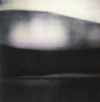 The music is relentless from the beginning, immersing me in an acoustic world born of various detritus scavenged from sewers, dimly lit alleyways, or heaps of litter. It seems that anything found in these locales is fair game for making rhythm, from trashcans to generators and barely functional machine parts. Conventional drums appear in some places, yet their role is to punctuate the chaos more than to provide a steady beat around which the other noises rally. Occasionally, one of the denizens disturbed by this din rises from its lair to lament the pillaging or to frighten the intruders away. The epic closer "Compound My Eyes" is itself a test in endurance at over 40 minutes in length, and separates the dilettantes from the devotional. Because each song uses such similar compositional elements, after a while the album begins to sound like variations of a theme, but oh, what an intriguing and addictive theme it is.
The music is relentless from the beginning, immersing me in an acoustic world born of various detritus scavenged from sewers, dimly lit alleyways, or heaps of litter. It seems that anything found in these locales is fair game for making rhythm, from trashcans to generators and barely functional machine parts. Conventional drums appear in some places, yet their role is to punctuate the chaos more than to provide a steady beat around which the other noises rally. Occasionally, one of the denizens disturbed by this din rises from its lair to lament the pillaging or to frighten the intruders away. The epic closer "Compound My Eyes" is itself a test in endurance at over 40 minutes in length, and separates the dilettantes from the devotional. Because each song uses such similar compositional elements, after a while the album begins to sound like variations of a theme, but oh, what an intriguing and addictive theme it is.
Read More
- Administrator
- Albums and Singles
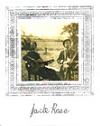 The album is packaged in a gorgeous sleeve made of white embossed card with a beautiful sepia-toned photo of Rose's musician ancestors (the whole thing smells of bubblegum, not intentional I am sure but pleasant nonetheless). The old time vibe from the photo sets the mood for the album as Rose fingerpicks and slides his way all over his guitar. His playing is infused heavily with bluegrass and blues techniques and styles.
The album is packaged in a gorgeous sleeve made of white embossed card with a beautiful sepia-toned photo of Rose's musician ancestors (the whole thing smells of bubblegum, not intentional I am sure but pleasant nonetheless). The old time vibe from the photo sets the mood for the album as Rose fingerpicks and slides his way all over his guitar. His playing is infused heavily with bluegrass and blues techniques and styles.
A description like that would normally turn me off as if there is one thing that has been done to death over the last 80 years is the blues but Rose’s playing make these tired old scales sound fresher than usual.The pieces on this self-titled album all are brimming with warmth and brightness; they sound like they should be accompanied by a video-montage of Appalachian countryside and people lazing on verandas with battered old guitars and farm equipment surrounding them (or maybe I am losing the run of myself here). Rose’s playing is as clean as driven snow and full of expression. Occasionally a touch of reverb is added, such as on “St. Louis Blues,” to add a little color to his already polychromatic playing.
Most of the tracks are around the 3-4 minute mark, which make for perfect little bursts of music. I found it nigh on impossible not to tap my toe to most of them. “Gage Blues” in particular gets my dancing bug all riled up. This is followed by the epic "Spirits in the House," which sees Rose slowing down and slowly building up a heady and lovely mood. This evokes a much more southern feeling compared to the other pieces, a romantic and mythical vision of Louisiana complete with thick heat and humidity. This wonderful piece makes it well worth tracking down this album, the other pieces are good but I found they have a shorter shelf life than this one which I could listen to all day. The way it simmers and bubbles for 13 glorious minutes is sublime.
This album may not be of much interest to someone who cannot stand bluegrass, blues or other roots styles. Although in saying that, I thought myself jaded with all things slide guitar related but I found it to be captivating. Such exemplary guitar playing both makes me jealous that I cannot do similar things with my guitar and reminds me that the vast majority of guitarists do not play the guitar but simply pose with power chords.
samples:
Read More
- Administrator
- Albums and Singles
 It's winter, and while it's been a rather warm one, it's still been rainy and of course, dark. As I look around the piles of recent and forthcoming releases and loads of mopey bedroom-made electronica demos in boxes I'll never open, it's painfully hard to find solace from dreariness. Thankfully I've got some time to catch up on Aberdeen.
It's winter, and while it's been a rather warm one, it's still been rainy and of course, dark. As I look around the piles of recent and forthcoming releases and loads of mopey bedroom-made electronica demos in boxes I'll never open, it's painfully hard to find solace from dreariness. Thankfully I've got some time to catch up on Aberdeen.
Aberdeen's one of the most unsuspecting groups to get a collection like this as they only ever had one album in the span of about 10 years of existence. Although they were born in the shoegaze/dreampop world nobody could ever accuse Aberdeen of being dreary. Even if the songs are about bitches stealing boyfriends, fear, or hatred, the music was always bright and uplifting, but then this twee thing happened.
History won't regard Beth Arzy as one of her generation's voices nor will they regard John Girgus as a guitar god, but from their demo-sounding first few songs with the drum machine backing through the recordings from their only album, 2002's Homesick and Happy to Be Here, there is always something charming and inviting. The collection isn't without its weak spots, however.
The best stuff is almost always the simplest and where they shine are on songs where they keep easy melodies and put the effects way up, like the rhythmic echoing of "Fireworks" from 1995 or the bouncy "Snapdragon" from the same year (but different singles). "The Boy Has Gone Away" was a single from Homesick and is featured here with its two non-LP tracks and while I love both Girus and Arzy's vocals together on "Miss You While You're Gone," I'm kind of bugged by the seemingly vocal posturing of the Girgus-dominated "Emma's House" and "Florida."
Their entire career of recorded material can be obtained with this disc and Homesick. While I'm not rushing out to get that nor pursue more Trembling Blue Stars (of whom Arzy now sings for) Aberdeen songs do come in handy on mixes or on radio shows when there's that need for an extra bit of brightness.
samples:
Read More
- Matthew Amundsen
- Albums and Singles
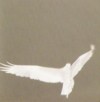 Although the song is half an hour long, it has three movements distinct enough to be separate tracks. The first, “Invisible Fire,” is a quiet exploration grounded by the guitar while the other instruments dart forth on their own. It heads into abstract territory for several minutes, striking bargains with interstellar entities, until brought back by the monologue of a disembodied voice. The next section, “The Rebis,” finds the group turning up the amplifiers, returning the drums to a steady beat, and adding a searing violin to complement this psychedelic jam. “Latona” is the most sedate part of the album, with its acoustic guitars, tabla, and flute providing an upbeat ending to this mutating piece and at last returning the group’s feet to the ground. While this album isn’t terribly different from other recordings by the band, its flowing sections contain plenty enough within to keep me entranced.
Although the song is half an hour long, it has three movements distinct enough to be separate tracks. The first, “Invisible Fire,” is a quiet exploration grounded by the guitar while the other instruments dart forth on their own. It heads into abstract territory for several minutes, striking bargains with interstellar entities, until brought back by the monologue of a disembodied voice. The next section, “The Rebis,” finds the group turning up the amplifiers, returning the drums to a steady beat, and adding a searing violin to complement this psychedelic jam. “Latona” is the most sedate part of the album, with its acoustic guitars, tabla, and flute providing an upbeat ending to this mutating piece and at last returning the group’s feet to the ground. While this album isn’t terribly different from other recordings by the band, its flowing sections contain plenty enough within to keep me entranced.
Read More
- Matthew Amundsen
- Albums and Singles
While it starts off intriguingly enough with quiet, ominous drones, every time the band seems to up the ante, nothing much develops. Some snippets of delayed feedback or ringing bells appear every now and then, but they don’t signify any real changes to the music. When other changes do occur, they’re fairly harmless and usually disappear before long, leaving the drone that provides much of the track’s foundation. The song achieves its greatest drama after about 24 minutes, but then spends the rest of the time with a rumbling that fades for so long and gets so quiet that it’s easy to forget that the disc is still playing. Nothing about this recording is bad, per se, but at times it feels like the band’s phoning it in, that this is merely experimentation by the numbers. It’s less structured than their other albums, but not different enough from other experimental work to recommend it. In the end, it’s almost negligible if only because it’s so ordinary.
Read More
- Administrator
- Albums and Singles
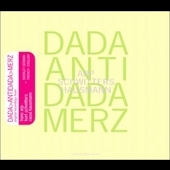 Describing Dada is a paradox, like a proverbial wet fish in the palm of your hand certain only to be lost in an attempted securing grasp. As Greil Marcus details in Lipstick Traces, subsequent efforts in art and music contain echoes from Zürich, Berlin and elsewhere; not least the urge (first and foremost) to destroy, or as Orange Juice sang: to rip it up and start again.
Describing Dada is a paradox, like a proverbial wet fish in the palm of your hand certain only to be lost in an attempted securing grasp. As Greil Marcus details in Lipstick Traces, subsequent efforts in art and music contain echoes from Zürich, Berlin and elsewhere; not least the urge (first and foremost) to destroy, or as Orange Juice sang: to rip it up and start again.
This collection features early sound poetry by (Hans) Jean Arp, recorded in 1961, the mind-bending "Anna Blume" and "Ursonate;" the only merzpoems Kurt Schwitters recorded (from 1932); and several stunning efforts by Raoul Hausmann, recorded by Henri Chopin in 1956-59. Dada rejected a nonsensical war and a seemingly complicit society, so sadly these sound poems make topical sense. They can't sever the head of the faulty puppet President of the United States or obliterate the pervading moronic bastard culture which he so ably represents, but they articulate the impetus.
When listening to non-English words in song, I often feel happily ignorant, lest they be a thinly disguised travel commercial, some government-approved triteness or an ode to domestic submission. Stories of Arp spark an urge to learn German. While the law insisted he be called Jean in 1915 France, Hans Arp's response to being drafted into the German army is a work of art in itself. He wrote the date in all spaces on the forms before adding them like a sum. Then, naked, he handed in his paperwork and was sent home. A friend of Tristran Tzara, Arp was a founding member of Dada in Zürich, and in 1920 he set up the Cologne Dada group. His work was featured in the first exhibition of the Surrealist group in Paris before he founded the Abstraction-Création movement and the periodical, Transition, and created reliefs and murals in the US and sculpture in Italy. Musically, his flat voice sometimes fails to ignite the text, and so the mischievous spirit of bemusement is absent. After a disappointing opener, his second effort, "Die Wolkenpumpe" is a measured rant; like a demented husband listing imagined slights to his wife in an unsettling monotone ("and on Thursday 23rd you did bring me herring in cream rather than in the white wine sauce as per my written request.") Next, "Dada Sprüche" seems to be some list of what Dada is or isn't: a blank prescription eaten then regurgitated as a map with instructions not to follow. Arp's moments of gnawing intensity may please in short exposure rather than when heard all in one sitting. Eventually my interest resembled someone stuck in a lecture comparing the reliability of traffic density forecasts to those of pension plans, a scantily-clad darling reclining in a room tantalizingly close by with fresh fruit, favorite vinyl, bread and wine.
Kurt Schwitters transcended medium and genre: Dada, Constructivism, Surrealism, poetry, sound, painting, collage, sculpture, and typography. It can be argued that he invented what would later be termed installations. One legacy is his Merz works—art pieces built up of found objects; the largest of which are constructions called Merzbau. According to Schwitters, merz is derived from the name of the Commerzbank; though the word is also notably similar to the French word merde. In 1937 Schwitters fled to Norway, and in the same year, his Merz pictures were included in the Nazi exhibition of degenerate art. He created Merzbau in Oslo, on the Norwegian island of Hjertoya, and after his internment on the Isle of Man, he moved to the Lake District of England, where, in 1947, he began work on the last Merzbau, the Merzbarn. One wall of this final structure is now in the Hatton Gallery and the shell of the barn remains in Elterwater. Since forgeries of his collages turn up regularly on Ebay, bidders might seek advice from the Kurt Schwitters Archive at the Sprengel Museum in Hanover. The inclusion of his two recordings on this disc is a treat for the imagination. Schwitters' speech patterns exude a playfulness and awareness of actual sound less evident in Arp's tracks. One man's cannibalism is another's homage: Brian Eno sampled Ursonate for his track "Kurt's Rejoinder;" Japanese musician Merzbow took his name from Schwitters; Colin Morton has written poetry and drama inspired by Schwitters; and Michael Nyman's opera Man and Boy: Dada fictionalized Schwitters' time in London. The German hip-hop band Freundeskreis quoted from his poem in their hit single "ANNA."
Raoul Hausmann, an Austrian sculptor and writer, was the cofounder of the Berlin Dada movement in 1917, and the creator of photomontage: though other sources cite The English photographer Henry Peach Robinson. Hausmann painted "Tatlin at Home" in 1920 then gave up painting in 1923 and became more interested in various experimental photographic procedures.
His wild contributions to this disc are very enjoyable. "BBB" sounds equal parts curse and the calling in of the cat for his tea. His stuttered busted machine gun intonations foretell frustrated pop-rebellion ("why don't you all f-f-f-f-ade away..."), his eerie shrieks, unhinged mumbling and gurgling, never sound merely nonsensical even when resembling the water spiraling down a flushed toilet. I have no real idea what is going on, whether it was spontaneous, scripted or rehearsed and his spirited efforts make such a question unimportant. Hausmann seems to be reading backwards on "K Perioum," to be involved in a study of his own breath during "Offeah" and elsewhere lurches from trilling insanity, call-and-response guttural phrasing, vaguely Arabic intonations, warm melodic twitters, metallic hiss, stunned yodels, heartbroken wailing, quacking, and—on "Cauchemar"—the shocking contrast of mere singing. Hausmann makes translation redundant yet invests real power in the oddest of deliciously nihilistic (un)exhortations. His are words spat in the face of stagnation.
While there are ample websites devoted to the images, polemic, locations, history and influence of Dada; my favorite may be the beautiful: www.mital-u.ch/Dada from where I get the idea that Dada was less an art movement than an anti-everything, less an anti-everything than an answer to the ever topical question: What shall we do tonight?
samples:
- Hans Arp - In Automobilen Reich
- Raoul Hausmann - BBB
- Kurt Schwitters - Ursonate
Read More
- Administrator
- Albums and Singles
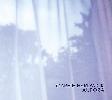 Captivating from start to finish, this latest Low Point CDR is perfect coming-out-of-winter listen. Like an especially slow thaw this disc seems to make everything crawl along t its own pace. The faded net curtain photograph cover art helping to coat the green trees in the distance in a chilly wrap of opaque fog. This one man and guitar effect pedals three tracker carves a pleasant little niche out of the currently massive drone renaissance thats sweeping the world.
Captivating from start to finish, this latest Low Point CDR is perfect coming-out-of-winter listen. Like an especially slow thaw this disc seems to make everything crawl along t its own pace. The faded net curtain photograph cover art helping to coat the green trees in the distance in a chilly wrap of opaque fog. This one man and guitar effect pedals three tracker carves a pleasant little niche out of the currently massive drone renaissance thats sweeping the world.
Aurora is one of those albums that is easy to both sink into and to delve inside. It would probably be tempting to call it Enoesque if it wasn’t such a tremendously overused cliché already. This (nearly) 17 minute long track is split into three parts which slowly fall into each other from great heights of guitar generated hum. The gaps are impossible to spot, and these programmed breaks (although invisible) don’t really seem to have any real point as this piece of music is definitely best enjoyed as a single piece anyway. Hardwick's warbling guitar lines sound more like synth sines than axe work, flooding the speakers and double coating them in glistening signal tremors.
The warm strands here move more delicately than just a simple layering or lining up exercise, the louder the volume the deeper the record gets. Occasionally the momentum melts into a unifying single swaddle of tone, "Part 2" even manages to interconnect touches of strummed string melody to the tones in a post-rock style. This CDR may not be pulling the genre into hitherto undiscovered shapes, but Aurora is a beautiful listen nonetheless.
samples:
Read More
- Administrator
- Albums and Singles
 This is a fantastic compilation that shows the range and talent that Bates is in possession of. Cold, post punk songs sit comfortably beside real English folk songs that are full of warmth. Impressively, despite covering over 25 years of his career, the different styles and periods of Bates' works still sound like they were recorded all in one go.
This is a fantastic compilation that shows the range and talent that Bates is in possession of. Cold, post punk songs sit comfortably beside real English folk songs that are full of warmth. Impressively, despite covering over 25 years of his career, the different styles and periods of Bates' works still sound like they were recorded all in one go.
Sub Rosa
With folk now being a term used loosely by many, including myself, it is important to get things straight: Bates writes songs in a proper folk style; he does not just throw an acoustic guitar into the mix and try to pass it off as some hippie jam piece of crap. Instead his songs have an ancient quality about them, sounding like they have been crafted by a few generations of singers. Songs like "Shorepoem" and "Cherry Tree Carol" are two examples of Bates' quality songwriting. There is a timelessness to these songs that is hard to capture and surprisingly the small hints of electronics used in the songs do not take away from this timelessness.
It is not just serious folky sounds that this compilation covers but the poppier end of the spectrum too. Songs like "First and Last February" and "Later War Cries" remind me of Matt Johnson's brand of pop but Bates is far from a The The clone. His more experimental efforts are also represented by an excerpt from a noisy piece called "Dissonance" from before he formed Eyeless in Gaza. This piece would sound at home on Industrial Records, which is not something that can be said of the rest of Your Jewled Footsteps.
One problem with some of the songs, mainly those from the early '80s, is that there is sometimes a severe hint of goth off them. At times Bates puts too much effort into sounding emotional on these tracks, coming off a little hysterical. However, the keyboards on all these early songs are excellent, very like those found on Joy Division's Closer which is no small complement in my book. The music and the singing improve as Bates' career progresses with the mid-'90s material definitely being the best in overall quality. Although some of the better lyrics belong to James Joyce and not to Bates, his musical arrangements of Joyce's poetry are a damn sight better than many I have heard on many a Bloomsday walking through Dublin.
Your Jewled Footsteps is a wonderful collection of songs. To the detriment of other albums that need reviewing I have been spinning this quite a lot over the last couple of weeks. It does not sound like a compilation at all; Bates' work all fits together nicely so instead of sounding disjointed like most career retrospectives it sounds more like a normal album. I cannot recommend this enough for those who are new to Bates. As for those who are familiar with his work, there are enough rare and unreleased songs here to justify the release of Your Jewled Footsteps.
samples:
Read More
- Administrator
- Albums and Singles
 After a coincidental 17 year absence, Jackson Del Rey and Louise Bialik have revived the 17 Pygmies name, returning with a seasoned elegance, not a vengeance as might be expected from hints by both Del Rey's vigorous 2005 release I Am the Light and for a collective once noted as a reference point to a young Godspeed You Black Emperor.
After a coincidental 17 year absence, Jackson Del Rey and Louise Bialik have revived the 17 Pygmies name, returning with a seasoned elegance, not a vengeance as might be expected from hints by both Del Rey's vigorous 2005 release I Am the Light and for a collective once noted as a reference point to a young Godspeed You Black Emperor.
It's no surprise that on the whole, most music nerds don't even know much about 17 Pygmies, as their back catalogue, mainly issued only on LP, is out of print and difficult to find. The first publicly known 17 Pygmies recordings date back to 1983: the Hatikva EP was made while Jackson Del Rey was still a full-time member of Savage Republic. When he split from Savage Republic to pursue 17 Pygmies he returned to his birth name Philip Drucker and recorded three albums with Robert Loveless and a revolving cast of core and guest performers. Debbie Spinelli and Fey Ruz were part of the lineup that recorded Jedda By the Sea, a college radio favorite following its 1984 release. The followup, 1985's Captured In Ice, while at times quite dark, was moreso a pop-oriented album which may have lost more of the hardcore fans of Jedda. Joining Loveless and Drucker on 1988's Welcome was Louise Bialik, who both wrote the lyrics and sang. While Welcome had an incredible cast of guest musicians (including Brad Laner, formerly of Savage Republic and later of Medicine and Electric Company) and some moments of sheer brilliance, the spoken-word carnival type theme left a lot of people confused. Released on Great Jones, one of those short-lived Island Records independent subsidiary boutique labels (see also Indigo, Supreme Recordings, Island Red, Mango, etc,...) it was essentially their last album, only followed by a collection of material from 1988-89 titled Missyfish, which surfaced in 1991 on CD by the long defunct Nate Starkman And Son label out of Chicago.
In 2005 Philip Drucker released I am the Light as Del Rey & the Sun Kings, an album with some brutal in-your-face moments with rocking guitars and guttural vocals. It's the rare points of elegant beauty, however, like the instrumental "Rose Garden (for Saadi)" which are reminiscent of a song like "Kristalnacht" from Welcome, and perhaps it was the reception of a strong track like this which made him reconsider the 17 Pygmies thing. I'm glad he did. 17 Pygmies resurfaced in 2006 with a 7" single "Last Train"/"Mocha Polka." The A-side with its drum machine and synth recordings hints more to the pop aesthetics of Captured In Ice period while the instrumental B-side is a fiery accordion, clarinet, drum and string jam. 13 Blackbirds is far more subdued, graceful, and tender.
13 Blackbirds is the 17 Pygmies of Welcome, except there's no goofy interludes, Philip Drucker has reclaimed the name Jackson Del Rey and Jeff Brenneman (an original member of White Glove test) has joined Louise Bialik seemingly at the center of the group, once again joined by various other players of stringed instruments and singers. While first listens immediately demonstrate the fantastic piano, guitar, and vocal work, they also show the group's very calculated arrangement—like the organic/acoustic and unique soul mashing like Blood-era This Mortal Coil and Lovetta Pippen-era His Name Is Alive—subsequent repeat listens over time bring out the great strength in the songwriting. Songs like the simple guitar and vocal "Cras Amet" or the instrumental piano melody of "Ubi Sunt?" I can hear long after they're over while the string arrangement on "Lila Pausa" is out of this world. The vocals of the song "Lotus" are buried deep in echoes and reverb while prominent beats like some of the best Scala music from the '90s. The album opens with "Heavenly Intro," so "Heavenly Creatures" comes across as the album's true finale (despite being followed by four more tracks). It's got a long and patient piano tune of the same melody as the string and accordion version of the album's opener but is polished off by the voice of gospel singer Jacquie James singing "Blackbird bye bye."
After a brief pause, the group come back with a cover of the Beatles' "Blackbird," and although it's performed with the uttmost respect, I'm not sure how I truly feel about its inclusion on this LP. The guitar playing is perfect, however, and, in their defense, covering a Beatles song is a difficult task as the Beatles are so untouchable (and this isn't one of their easier songs to play). There's a fine line between doing a note-for-note cover and adding way too much uncomfortable fluff that it almost becomes a parody (see: the Beatles solo members covering Beatles songs). They didn't cross either line but I think I prefer the flow of the album to end with "Heavenly Creatures." The three following tracks are instrumental versions of earlier songs credited not to 17 Pygmies but Cult with No Name, perhaps an incarnation of the group before they decided to do a 17 Pygmies record, but they're clearly the same performers despite being noted on the back cover as "additional interpretation."
Packaged in a very Constellation Records-looking earthy gatefold cardboard sleeve, 13 Blackbirds is packaged with 13 Lotus, a CD of 13 remixes and reinventions of the song Lotus by various artists. It's filled with a couple beat-friendly takes, like the "Bum 'n Bass Drop" version by Freakshot and the hip-hop "Notorious P.Y.G." version from once 2Pac remixer Lea Reis. Jo Gabriel's sparse piano version is probably the most striking while Echo Wanderer give two echoey versions which are a throwback to the spacey dub/rock overlap that signalled the untimely end of shoegazing in the mid-'90s. It's a complete contrast to 13 Blackbirds but nothing is surprising me about 17 Pygmies now that they've surprised us all by their return.
I'm excited that 17 Pygmies have returned. In an effort that isn't unlike their Welcome album, 13 Blackbirds/13 Lotus is quite ambitious. The payoff here I feel is far more enjoyable, however. If anybody's wondering where Debbie Spinelli ended up, her creepy group the Spirit Girls also have a release on the Trakwerx label. I hope that with this Trakwerx label the 17 Pygmies back catalogue will become available again, but as the notes say in the sketchy looking 1995 CD of Jedda By the Sea/Hatikva, my guess is that some of those masters are long lost. Of course, you could always try digging around auction websites for this stuff but with the recently re-sparked interest in Savage Republic, the competition for this stuff will be fierce. With any luck 17 Pygmies are forming some sort of live ensemble, and in the age of myspace, they seem quite approachable and amicable, so a letter campaign to them probably can't hurt. (hint, hint)
samples:
Read More

